Writing great content isn’t rocket science, but it’s easy to stumble into common traps that can hurt your business. Whether you’re crafting blog posts, social media updates, or email newsletters, the same mistakes keep popping up across small businesses everywhere.
At MoDuet, we’ve seen thousands of content pieces from small business owners who pour their hearts into their writing but miss the mark on execution. The good news? These mistakes are totally fixable once you know what to look for.
This guide will walk you through the most frequent content writing pitfalls and give you concrete steps to avoid them. By the end, you’ll have a toolkit to create content that actually connects with your audience and drives results for your business.
Writing Without Knowing Your Audience
The biggest mistake we see is businesses writing content for everyone, which means it resonates with no one. When you try to speak to everybody, your message gets watered down and loses its impact.
Take Sarah, who runs a local bakery. She was writing generic posts like “We make delicious baked goods for all occasions.” The problem? This could describe any bakery anywhere. Her audience couldn’t tell what made her special or why they should choose her over the competition.
After identifying her core customers (busy parents looking for quick breakfast solutions and office workers wanting fresh lunch options), Sarah started writing targeted content. Instead of generic posts, she shared “5 Grab-and-Go Breakfast Ideas for School Mornings” and “Why Our Sandwiches Beat the Food Court Every Time.”
How to fix it:
Create detailed customer profiles before you write anything. Ask yourself:
- What problems does my ideal customer face daily?
- What questions do they ask most often?
- Where do they spend their time online?
- What tone of voice resonates with them?
Write like you’re talking to one specific person, not a crowd. Your content will feel more personal and relevant.
Burying the Lead
Many small business owners bury their main point deep in their content. They spend paragraphs setting up context before getting to what really matters. Your readers don’t have time for long introductions.
Consider this email subject line from a local gym: “Important Information Regarding Our Facility Operations and Membership Benefits During the Current Seasonal Period.” What are they actually trying to say? After reading the entire email, it turns out they’re announcing extended summer hours.
A better approach: “We’re Open Late All Summer Long” with the new hours right in the first sentence.
How to fix it:
- Lead with your main message
- Put the most important information in your first paragraph
- Use the “inverted pyramid” structure from journalism: start with the conclusion, then add supporting details
- Read your opening paragraph out loud. Can someone understand your main point in 10 seconds?
Using Jargon and Complex Language
Industry jargon might make you sound smart, but it often confuses your customers. Remember, you’re the expert in your field, but your customers aren’t. They need you to translate complex concepts into simple, understandable language.
A financial advisor we worked with was writing about “optimizing asset allocation strategies to maximize risk-adjusted returns.” His clients had no idea what he meant. When he rewrote it as “how to spread your investments to grow your money while staying safe,” his engagement rates doubled.
How to fix it:
- Replace industry terms with everyday language
- Explain necessary technical terms when you first use them
- Read your content to someone outside your industry. If they look confused, simplify further
- Use shorter words when possible (help instead of facilitate, use instead of utilize)
Focusing on Features Instead of Benefits
Small business owners love talking about what their product does, but customers care more about what it does for them. Features are what something has; benefits are what those features mean for the customer’s life.
A website designer kept highlighting technical features: “We use responsive design with CSS3 and HTML5.” Customers didn’t care about the technical details. They wanted to know their website would look great on phones and tablets, load quickly, and help them get more customers.
How to fix it:
For every feature you mention, ask “So what?” until you get to the real benefit:
- Feature: “Our software has automated reporting”
- So what? “You don’t have to create reports manually”
- So what? “You save 10 hours per week”
- So what? “You can focus on growing your business instead of paperwork”
Start with the final “so what” – that’s your benefit.
Writing Walls of Text
Long paragraphs scare readers away. When people see a giant block of text, they often leave without reading a single word. Online readers scan content quickly, looking for information that jumps out at them.
Think about your own reading habits. When you land on a blog post or webpage, do you read every word carefully, or do you scan for interesting bits? Most people scan first, then read the parts that catch their attention.
How to fix it:
- Keep paragraphs to 3-4 sentences maximum
- Use bullet points and numbered lists
- Add subheadings every few paragraphs
- Include white space to give readers’ eyes a break
- Bold important phrases (but don’t overdo it)
Neglecting the Call to Action
Many small businesses write great content but forget to tell readers what to do next. Every piece of content should guide readers toward a specific action, whether that’s making a purchase, signing up for a newsletter, or calling for more information.
A restaurant owner wrote amazing blog posts about seasonal ingredients and cooking techniques. The posts got lots of views but didn’t bring in new customers. The problem? She never told readers how to experience these ingredients at her restaurant. Adding simple calls to action like “Try our seasonal menu this week” and “Reserve your table online” started converting readers into diners.
How to fix it:
- End every piece of content with a clear next step
- Make your call to action specific and actionable
- Use action words (download, call, visit, try, start)
- Make it easy to follow through (include links, phone numbers, or clear directions)
- Test different calls to action to see what works best
Inconsistent Voice and Tone
Your brand voice is how your business sounds in writing. Some businesses sound professional in their blog posts but casual on social media, then formal in emails. This inconsistency confuses customers and weakens your brand identity.
A local law firm struggled with this. Their website sounded intimidating and formal, their social media was super casual, and their emails fell somewhere in between. Potential clients couldn’t get a clear sense of what working with them would be like.
How to fix it:
- Define your brand voice in simple terms (friendly but professional, casual but knowledgeable, approachable expert)
- Create a style guide with examples of your voice in action
- Review all your content channels to ensure consistency
- Train anyone who writes for your business on your voice guidelines
Publishing Without Proofreading
Spelling mistakes, grammar errors, and typos make your business look unprofessional. Even small errors can hurt your credibility. When customers see mistakes in your content, they wonder if you’ll be careless with their business too.
We’ve seen businesses lose potential customers over simple errors. One client had a typo in their email subject line that made it look spammy. Another had a pricing error on their website that caused confusion and frustration.
How to fix it:
- Always proofread before publishing
- Read your content out loud to catch errors your eyes might miss
- Use tools like Grammarly, but don’t rely on them completely
- Ask someone else to review important content
- Take a break between writing and proofreading so you see it with fresh eyes
Ignoring SEO Basics
Search engine optimization helps people find your content online. Many small businesses ignore SEO completely or try to game the system with keyword stuffing. Both approaches hurt their visibility online.
Good SEO isn’t about tricking search engines. It’s about creating helpful content that answers people’s questions. When you write content that genuinely helps your audience, search engines notice.
How to fix it:
- Research what questions your customers ask online
- Include relevant keywords naturally in your content
- Write descriptive headlines that include keywords
- Use subheadings to organize your content
- Focus on creating helpful, thorough content rather than hitting keyword quotas
Not Telling Stories
Facts and features are important, but stories make your content memorable. Stories help customers connect emotionally with your business and understand how you can help them.
Instead of just listing your services, share stories about how you’ve helped real customers. Instead of describing your product features, tell the story of why you created it or how it solved a problem.
A landscaping company transformed their content by sharing customer stories. Instead of writing “We provide professional lawn care services,” they shared “How We Saved the Johnson Family’s Dream Wedding” (about rescuing a backyard wedding venue after a sprinkler system failure).
How to fix it:
- Collect customer stories and testimonials regularly
- Share behind-the-scenes stories about your business
- Use the problem-solution-result structure to frame stories
- Include specific details that make stories feel real and relatable
Moving Forward with Better Content
Writing great content takes practice, but avoiding these common mistakes will immediately improve your results. Start by picking one or two areas where you know you struggle, then work on improving them gradually.
Remember, perfect content doesn’t exist. Your customers want helpful, honest communication more than polished perfection. Focus on serving your audience with useful information, and your content will naturally get better over time.
The small businesses that succeed with content marketing are the ones that keep improving and stay consistent. They write regularly, pay attention to what works, and adjust their approach based on results.
Ready to transform your content? Start by auditing your existing content against these common mistakes. Pick the biggest issue you find and commit to fixing it in your next piece of content. Small improvements compound over time, and your audience will notice the difference.
Need help creating content that connects with your customers and grows your business? MoDuet specializes in helping small businesses tell their stories effectively. Contact us to learn how we can support your content marketing goals.
We Want To Talk To You About Your Marketing Goals.
Let’s Supercharge Your Online Growth!












